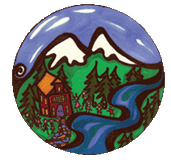Montessori and Creativity
Montessori is a reality-based educational philosophy. It is believed children can engage in fantasy after a secure base in reality. Children (2-6 yr olds) must first learn, sort, and classify what is real and then can use these facts to delve into creative innovation. The example I like to use is, when you understand “cow” and understand “purple”, you can invent a “purple cow”. In the Montessori White Papers, Laura Flores stated,
“We need to think of creativity, which is a complex construct, as being on a spectrum with general ability at one end and a specific area (such as math or creative writing) at the other end. On this spectrum, creativity is much closer to the specific-area end. The reason for this is that in order to be creative, you need to have knowledge. If you don’t know anything, you don’t have anything with which to create. And the sooner one acquires knowledge, the sooner one can actually create something novel and useful.” (Vol. I, p.9).
Flores continues, “The Sensorial materials are far better training for imaginative thought than the dress-up corner found in conventional preschools, as the research shows that pretend play doesn’t enhance creativity.”
The specific and sequenced presentations by the trained Montessori teacher are specifically designed to promote knowledge. In addition, the specific qualities within each material, plus the overarching promotion of self-regulation and care for self and others, builds the on the child’s reality and further promotes creativity. Montessori suggested the impressions the child gains through the interaction of all the materials, specifically the Sensorial materials, promotes contact with reality and thus fuels the imagination. “Training our senses is necessary for critical and creative thinking.
In a study by Education Scotland, it was found there are four features that promote creativity:
Students have control of their learning and ownership of their work
The physical environment is varied as children can work indoors, outdoors, and locations outside of school (elementary grades)
Students have flexible use of their time
Students can work at their own pace without pressure
These four items define a Montessori environment.

